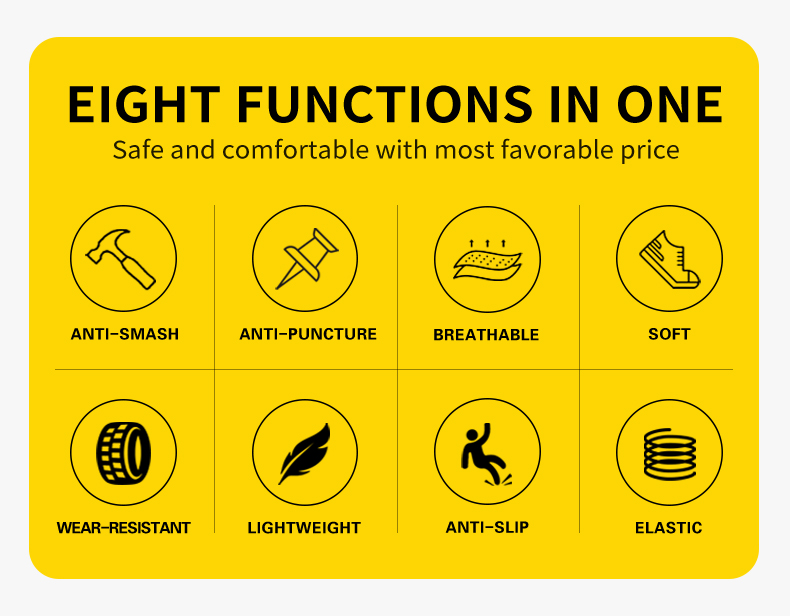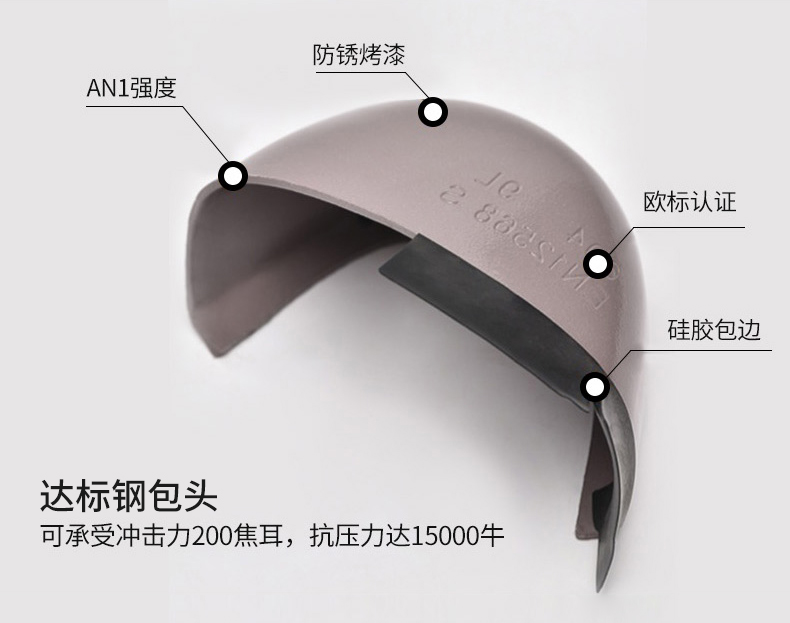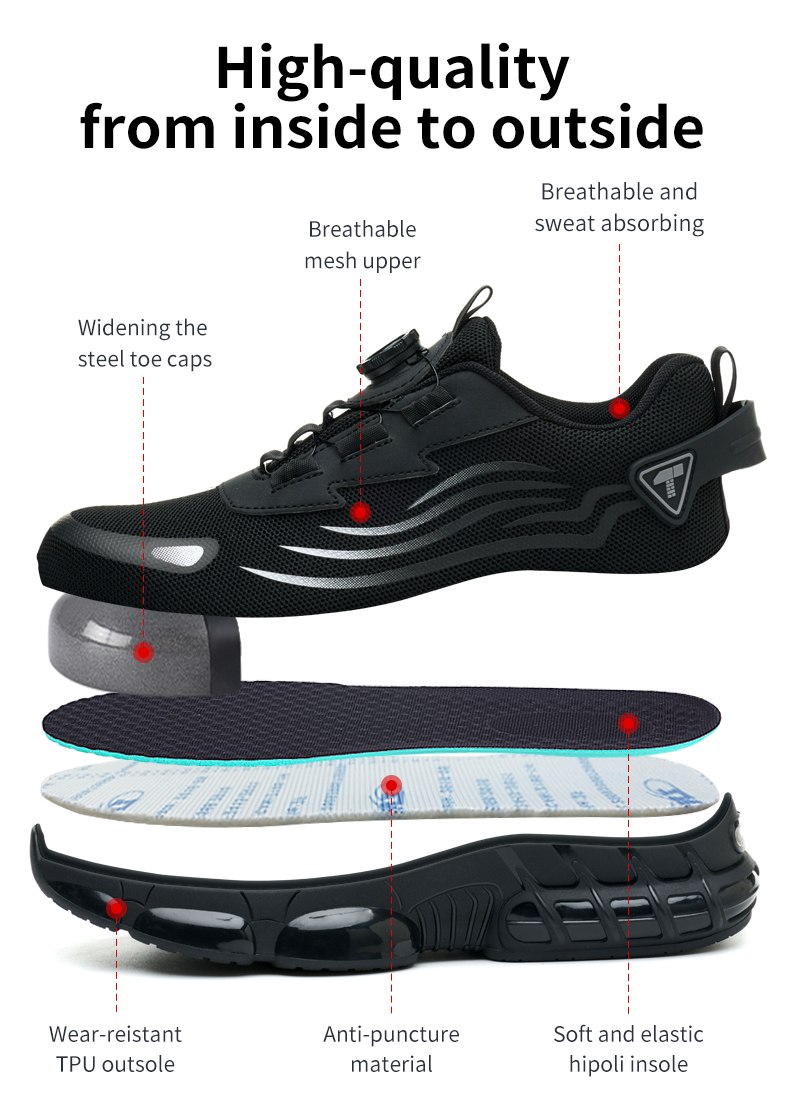Safety shoes are an indispensable piece of protective gear in various workplaces. But what protective effects do safety shoes have? Let’s explore the ten key protective effects that make safety shoes a must – have for workers.

1.Impact Protection
One of the most prominent protective functions of safety shoes is their ability to guard against impact. Safety shoes are typically equipped with steel or composite toe caps. These toe caps act as a shield, protecting the toes from heavy objects that might accidentally fall on them. For example, in construction sites where tools and building materials are frequently moved around, a dropped hammer or a piece of lumber could cause serious toe injuries. However, with safety shoes, the risk of such injuries is significantly reduced.

2.Puncture Resistance
Safety shoes are designed with sturdy soles and often a penetration – resistant midsole. This feature protects the feet from sharp objects on the ground, such as nails, glass shards, or metal fragments. In industrial settings like manufacturing plants or warehouses, workers are constantly at risk of stepping on these sharp items. A puncture – resistant sole can prevent these objects from piercing through the shoe and injuring the foot.
3.Electrical Hazard Protection
Some safety shoes come with a protective plate in the sole that provides insulation against electrical shock. In workplaces where there is a risk of electrical contact, such as electrical maintenance jobs or power plants, these shoes are essential. They can prevent electric current from passing through the feet and causing harm to the worker.
4.Slip Resistance
Slips and falls are common workplace accidents. Safety shoes are designed with slip – resistant soles that provide better traction on various surfaces. Whether it’s a wet floor in a kitchen or a greasy surface in a mechanical workshop, slip – resistant safety shoes can help workers maintain their footing and avoid dangerous falls. According to the Occupational Safety and Health Administration (OSHA), proper footwear can reduce the risk of slip – related injuries by a significant margin.
5.Heat Resistance
In high – temperature work environments like foundries or bakeries, heat – resistant safety shoes are crucial. These shoes can withstand extreme heat, protecting the feet from burns. They are made with materials that have high melting points and good insulation properties, ensuring that the heat does not transfer to the feet.
6.Cold Insulation
On the contrary, in cold workplaces such as refrigerated warehouses or outdoor jobs in winter, safety shoes can provide insulation against the cold. They are designed to keep the feet warm by preventing heat loss, which is essential for maintaining blood circulation and preventing frostbite.
7. Chemical Protection
Workers in chemical – handling industries are exposed to various corrosive and harmful chemicals. Safety shoes with chemical – resistant materials can protect the feet from chemical spills. For instance, in a laboratory or a chemical manufacturing plant, a spill of acid or other caustic substances could cause severe damage to the feet if not for the protection of safety shoes.
8.Comfort and Support
Safety shoes are not just about protection; they also offer comfort and support. They are designed with features like shock absorption and cushioning in high – impact areas such as the heel and the ball of the foot. This helps reduce fatigue during long – hours of work, allowing workers to move around freely without discomfort. Good foot support is also important for maintaining proper posture and preventing foot – related problems in the long run.
9. Air Circulation and Ventilation
Many safety shoes are designed to promote air circulation and ventilation. This inhibits the proliferation of bacteria, prevents the formation of blisters, and reduces the risk of foot infections. In jobs where workers are on their feet for extended periods, proper ventilation in the shoes is essential for foot health.
10. Crush Protection
Safety shoes protect the feet from crushing hazards. In environments where heavy machinery is used or where there is a risk of objects being compressed, such as in a shipping yard or a mining site, the sturdy construction of safety shoes can prevent the feet from being crushed.

In conclusion, safety shoes possess a wide range of protective capabilities. They can protect workers from various workplace hazards, from impact and puncture to chemical exposure and extreme temperatures. When choosing safety shoes, it’s important to consider the specific requirements of the workplace to ensure that the shoes provide the necessary protection. So, what kind of protection can safety shoes provide? As we’ve seen, the answer is a comprehensive range of protective effects that are vital for workplace safety.If you wish to gain a more detailed understanding of safety shoes, please contact us.
